
A few years ago, British speaker manufacturer KEF redefined high-end sound with their Muon loudspeaker. Not only was it striking looking, but it sounded so real it was almost unreal. The drawback? Actually there were a few: the Muon weighed in at 253 pounds, it stood an imposing six and a half feet tall by two feet wide, and a pair of them cost more than the average American home at the time -- $198,000 to be precise.
A little while later, KEF took the R&D they had sunk into the Muon, refined it for a slightly smaller form factor, enhanced their driver design and crossover technology even further and unveiled the Blade ($32,000/pair). The Blade took the high-end audio world by storm. It had excellent dynamics, deep extended base, liquid clear midrange and the type of deep soundstage and pinpoint imaging you normally only hear on ultra expensive mini-monitors (which typically lack dynamic range or any type of meaningful bass response). But alas, $32,000/pair is still out of reach of all but the most well-heeled audio fanatic. And the Blade's still imposing form factor (over five feet tall) ruled it out for those who prefer their speakers to be heard, but not seen.
But as with most technology, the breakthroughs made in pursuit of the state of the art have trickled down into more affordable offerings. Many of the driver designs that were invented for the Muon and perfected in the Blade have made it into KEF's "R" series of home speakers. For a mere $1,800, you can bring home a pair of KEF's R300 three-way "bookshelf" speakers which feature the latest version of KEF's five inch UniQ driver.
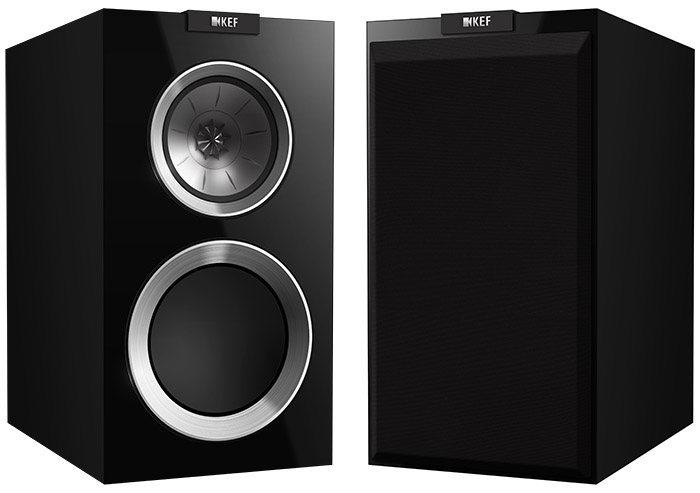
The R300's concentric UniQ driver is derived from the Blade's own proprietary midrange/tweeter unit. In the center of the five-inch midrange is a one-inch vented tweeter for high frequency reproduction. This concentric driver approach eliminates phasing distortion and contributes toward the speaker's exceptional imaging performance. Bass duties are handled by the integrated 6.5" aluminium bass driver. Of course you're not going to get the extended bass, nor the full dynamic range of the larger speakers, but you will get KEF's trademark transparency, pinpoint imaging and smooth midrange as well as a decent amount of bass output. And they make an excellent foundation for a multi-channel surround sound system.
A Hemisphere of Sound
For home theater use, you're going to need more than just two speakers. In our case, we mated the main set of R300s with another pair of R300s for the surround channels, an R200c center channel speaker ($1,000), and an R400b powered subwoofer ($1,700). Keeping all the speakers in the same brand (and even the same series) is important in order to create a coherent multi-channel listening experience. If you're keeping track, that put the system cost at $6,300. But of course, we weren't done yet.
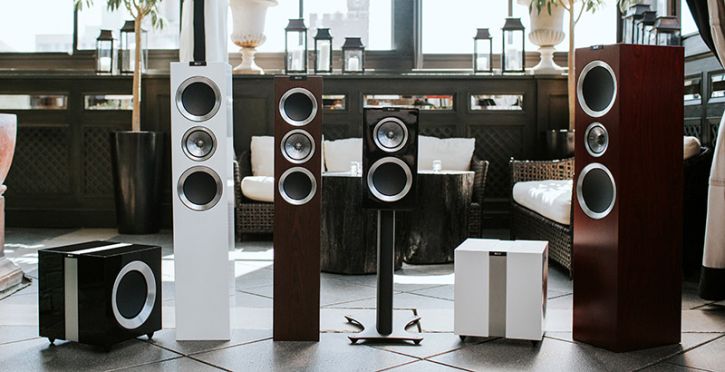
Today, we are seeing the dawn of a new age in surround sound: immersive sound. Immersive sound gives you the ability to hear sound not just from all around you, but from above you as well. There are three major flavors of immersive sound: Dolby Atmos, AURO-3D and DTS:X. At the moment, Dolby Atmos has the most titles available for home use, followed by DTS:X. AURO-3D has only a handful of titles available today for consumer use. For more information see our list of movies available in Dolby Atmos and movies available in DTS:X.
KEF offers a number of different wall-mounted, in-wall, and in-ceiling speakers which can be used for the height channels of an immersive sound system. But for those who are looking for a more discrete approach without sacrificing quality, KEF also makes the R50 Dolby Atmos elevation module ($1,200/pair). We opted to use four of these modules for height effects, bringing the total system price up to $8,700.
KEF's R50 up-firing speakers are made to sit atop a pair of KEF's tower or bookshelf speakers, so they don't require any drilling, wall-cutting, unsightly speaker wires along the wall or expensive custom installation. When used with a receiver or preamp that includes Dolby Atmos and/or DTS:X decoding, the R50s' upward-firing drivers reflect sound off your ceiling using specialized acoustic filters and electronic processing in the processor (aka, "magic") to fool your brain into thinking that the speakers are actually above your head.
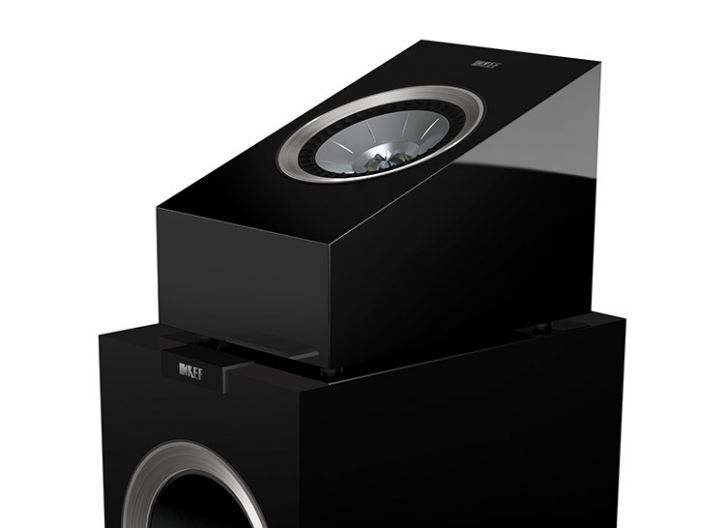
The one drawback to this approach is that AURO specifically does not support Dolby Atmos reflective speakers with their AURO-3D immersive sound format. This is not a limitation with KEF, per se, but a limitation to using AURO-3D with *any* reflective speakers. AURO-3D requires true ceiling mounted speakers so this is something to consider if AURO-3D is important to you. Luckily, DTS:X is not so picky as our tests show that DTS:X works quite well with the KEF R50 Dolby Atmos up-firing speakers.
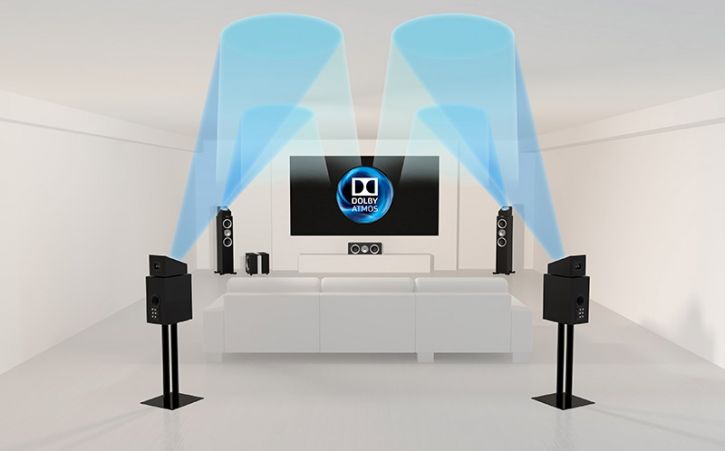
To drive this 5.1.4-channel system, we used Marantz' top receiver, the excellent sounding SR7010 (which has now been replaced with the SR7011). The SR7010 and SR7011 both include Dolby Atmos and DTS:X decoding and nine 125-watt amplifiers: one for each of the speakers in a 5.1.4 or 7.1.2 speaker configuration. The KEF subwoofer brings its own pair of 250-watt amplifiers to the table to power its two independent nine-inch bass drivers.
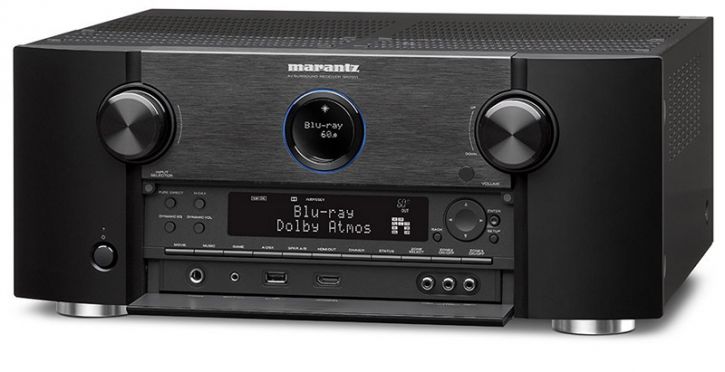
A Fly in the Ointment
When I finally got all of the speakers connected and placed in their final positions, I queued up some Dolby Atmos material and waited to be blown away by immersive Dolby Atmos surround sound. And waited... and waited. From the test tones, I could tell that everything was set up properly. And I could tell that the main speakers were all functioning properly - producing some really stunning sound, actually. But there just wasn't much going on upstairs: the height information which is so critical to immersive sound was diffuse and almost non-existent. Clearly there was a hitch.
The hitch was that my ceiling, painted textured plaster from the 1930s, wasn't conducive to speakers like the R50 Dolby Atmos module. For these Dolby Atmos elevation speakers to really lock in and work properly, the ceiling has to be flat, reflective, not angled and somewhere between 7 to 12 feet from the floor. My problem was that the textured plaster was neither flat, nor all that reflective. Since my basement is my man cave, and I have tools, it took me very little time to cut up 4 panels of 1/4" plywood and place these strategically on the ceiling where the beams of sound from the elevation modules would strike. BINGO! The height effects were there, and there in spades.
BIG SOUND!
I listened to a variety of sources through the system, including High Res Audio files (downloaded from HD Tracks, natch), CDs, streaming music and movies, a whole batch of Blu-rays and even some multi-channel high resolution DVD-Audio and SACD discs I still have in my collection. But most of all, I watched and listened to my growing collection of Dolby Atmos and DTS:X-encoded Blu-ray titles so I could hear the system in its full immersive glory.
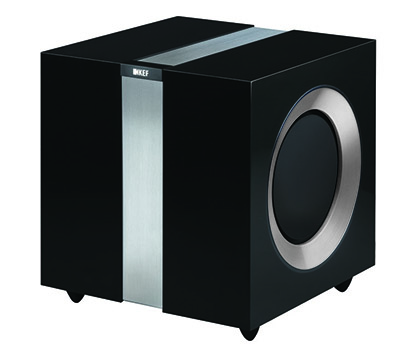
The Dolby Atmos Blu-ray Demo Disc includes a few trailers and demo clips which highlight the Dolby Atmos listening experience. My favorite trailer is called "Amaze" - it features jungle sounds, a rainstorm with lightning, buzzing insects and flying birds. Most listeners just can't believe that there aren't speakers in the ceiling as sound clearly comes from over their heads. With the KEF system, you are transported into a rain forest and jungle. Close your eyes: you are there.
Moving on to actual movie content, the introductory scene on the Atmos-encoded "Gravity" Diamond Luxe Edition Blu-ray Disc, gives the listener a real sense of the vastness of space and our own insignificance within it. After a powerful, visceral crescendo, the sound disappears with a wide shot of the earth as seen from space. Sound slowly grows from behind and above the listener as the Space Shuttle appears as a tiny dot and approaches the camera. Sound builds as astronauts carry on a conversation with Mission Control. Every voice comes from a distinct point in space, which allows us to pick up on fine details that are lost when we switch over to a 5.1-channel non-height-enabled version of the soundtrack. The KEF speakers' excellent midrange response and pinpoint imaging allow them to reproduce complex dialog as if the people were right there in front of you (and above you, and behind you).
"Expendables 3" didn't win any best picture awards (nor should it have), but its Dolby Atmos soundtrack on Blu-ray will give any home theater system a work-out. On the KEF system, the epic final battle was as ridiculously over the top as it was meant to be. And in this case, I mean that quite literally. Missiles fly over the top of our heads; automatic weapon fire zips all around and above us; the crew's dilapidated old transport plane soars from the rear to the front of our home theater - always high above us - and off into a sunset. The KEF system isn't limited to the delicate tones of a jazz ensemble or a solo singer/songwriter: it's equally at home reproducing the bombastic sounds of "The Hunger Games: Mockingjay, Part I," "John Wick" and "Transformers: Age of Extinction."

Switching over to DTS:X material, the system was equally adept at creating a huge immersive soundstage on "Ex Machina" and "Jason Bourne." In "Ex Machina," the system recreates the eerie claustrophobic interior of a reclusive billionaire's underground lair. In "Jason Bourne," the Athens protesters scene comes alive in three dimensions as the sounds of voices, mob destruction and gunfire surround the listener, And in the car chase through Las Vegas, the height channels help to complement the on-screen action as cars are launched through the air between buildings. The on-screen action may be unbelievable, but the KEF/Marantz system draws you in, nonetheless.
And these height effects aren't limited to just movies. One of my favorite clips on the DTS:X Demo Disc is a live performance of Imagine Dragons "I Bet My Life." This track, played back on the KEF speakers, makes you feel like you're right there in the theater watching the band with a few hundred of your closest friends. Similarly, the Dolby Atmos mix of Enrique Iglesias "Bailando" on the Dolby Atmos demo disc highlights how a studio recording can be enhanced with instruments and effects coming at you from all directions, without losing the solid presence of the lead vocals from front and center.
Switching over to 5.1-channel music material, I listened to "Queen: Night at the Opera" on DVD-Audio. This re-mix of the classic album takes full advantage of surround sound as an art form. This is not a realistic representation of a live performance, but a fantastic example of what is possible when a classic work is re-imagined in an all-new medium. "Bohemian Rhapsody" in 96Khz/24-bit 5.1 sound is captured extremely well on the KEF system, with voices and instruments coming from distinct points in space all around you. If you want to be even more adventurous, use your Dolby Atmos-capable receiver's "Dolby Surround" feature to dynamically augment the 5.1-channel mix to a height-enabled version. With this enabled, voices and instruments come from virtually all over the hemisphere of sound that is defined by the Dolby Atmos surround sound system. This is a vocally intense song and the R Series' ability to reproduce the human voice shines brightly.
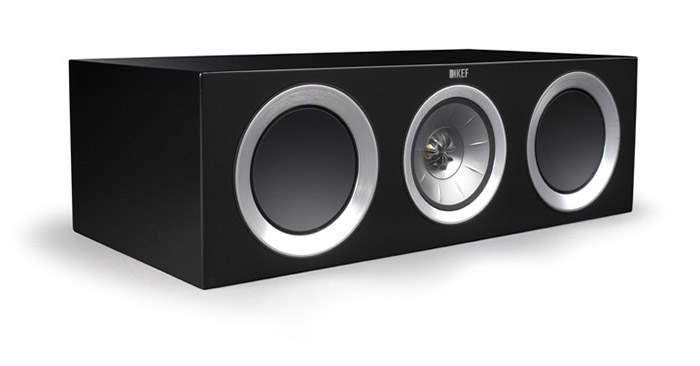
Another favorite DVD-Audio demo disc of mine is "Inside the Music: Women on Top" - a 5.1-channel 96/24 remix of classic 80s tracks from bands with female lead singers. For this release, the producers went back to the studio to remix classic 80s cuts for surround sound, including Pat Benetar's "We Belong" and The Motels "Only the Lonely." You can tell that they went back to the master tapes as you can actually spot some vocal takes on the DVD-Audio that were different from the ones used in the original stereo mixes. On the KEF system, with Dolby Surround engaged, you'll get a wonderfully immersive experience from these familiar tracks. The system - and the recordings - bring you inside the music in a way that just isn't possible with a standard stereo mix or stereo pair of speakers.
Switching over to two-channel high resolution audio recordings (downloaded from HD Tracks), I listened to modern cuts from Lorde and Coldplay (released in better-than-CD 48 Khz/24-bit resolution) and these sounded very full and punchy with deep bass extension and excellent reproduction of fine detail. Moving on to even higher quality recordings such as the Daft Punk "Random Access Memories" album (88.2 KHz/24-bit), the system opened up even more, with a palpable sense of air around the voices and instruments that made the performances all the more immediate. If the only cut you've heard on that album is "Get Lucky," you're missing out on some excellent (and extremely well engineered and produced) funk-influenced electronica.
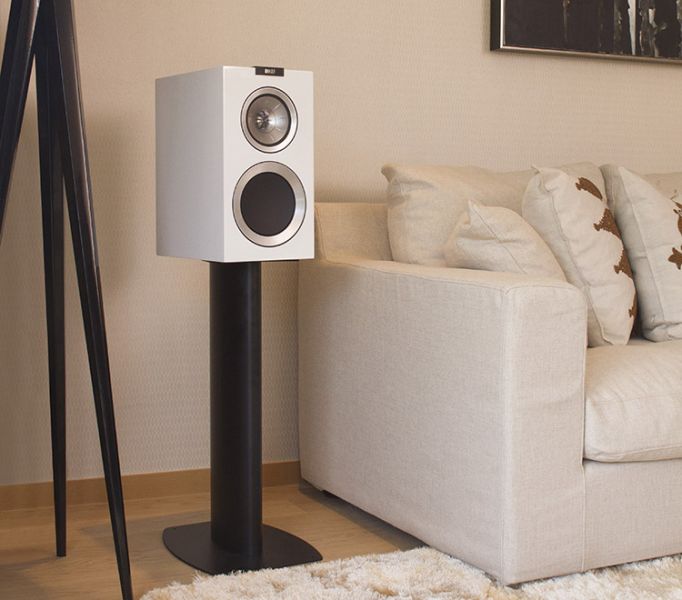
The high resolution remastered "Thriller" album (Michael Jackson) also proved revelatory on the KEF system. Upmixed in Dolby Surround to a height-enhanced mix, the title cut "Thriller" proved to be, well... thrilling! I'd daresay it sounded even better than it did when the recording was new. Although this is a 2-channel stereo mix (in 24-bit/176.4 KHz) howling wolves and creaking doors appeared to come from all around and above me, and instruments and voice were reproduced as well as in any more recent recording. Only a noticeable background of tape hiss (mostly audible between cuts) gave away the recording's age. Switching down to pure stereo playback (on a pair of the R300s plus the powered sub) still sounded excellent, with clear imaging, excellent vocal reproduction and a well-balanced blend of sound from top to bottom. But on an atmospheric track like this, I preferred the full presentation of the Dolby Surround-enhanced mix.
A Note on Dolby Atmos Height Modules
As I mentioned earlier, my immersive audio testing consisted almost exclusively of Dolby Atmos and DTS-X content and regular stereo and surround material "upconverted" to height-enhanced Dolby Surround. In this context, the R50 Dolby Atmos elevation modules were exceptionally good at reproducing height information. But if you're planning on going with a "format-agnostic" system that supports all three immersive sound formats - Dolby Atmos, DTS:X, and AURO-3D - you might consider using real ceiling-mounted height speakers instead. AURO has gone on record saying they do not support Dolby Atmos reflective height modules for AURO's height channels. At this point in time, there are many more Blu-ray Disc titles available for home use in Dolby Atmos and DTS:X, and the electronics gear that supports AURO-3D tends to be fairly expensive. So this shouldn't be a show-stopper for most people. And if you do opt for in-ceiling speakers, KEF makes a selection of those as well.
Turn-Ons:
Turn-Offs:
Final Thoughts
I thoroughly enjoyed my time with the KEF R Series speaker system. It's unquestionably the best sounding system I've had in my basement home theater, bar none, and really enhanced the home viewing and listening experience. The R300 bookshelf speakers, R200C center and R400B subwoofer get my unqualified recommendation. And if you've got the right room, topping it off with the R50 Dolby Atmos elevation modules, the KEF R Series speaker system will bring a new dimension in surround sound to your home theater.
System Reviewed (with Links to Amazon):
| Overall | |
|---|---|
| Value | |
| Performance | |
| Features/Ergonomics |